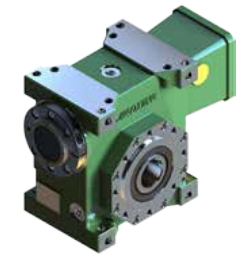The next headings contain data on critical aspects for selection and right use of gearbox.
For specific information over the gearbox selection,see the related chapters.
1.0 OUTPUT TORQUE
1.one  Rated output torque
Rated output torque
Mn2 [Nm]
The torque that can be transmitted continuously by means of the output shaft, with all the gear unit operated under a service factor fs = one.
1.two Expected torque
Mr2 [Nm]
The torque demand based on application necessity. It’s proposed to be equal to or much less than torque Mn2 the gearbox under research is rated for.
1.three Calculated torque
Mc2 [Nm]
Computational torque value to get utilized when deciding on the gearbox.
It truly is calculated taking into consideration the expected torque Mr2 and service aspect fs, as per the romance right here immediately after:Mc2 = Mr2 ?¡è fs ?¨¹ Mn2
2.0 Power
two.one Rated input energy
Pn1 [kW]
The parameter is often observed during the gearbox rating charts and represents the KW which will be safely transmitted for the gearbox, primarily based on input pace n1 and services factor fs= 1.
2.two Rated output power
Pn2 [kW]
This value may be the energy transmitted at gearbox output. it might be calculated using the following formulas:
Pn2 = Pn1 ?¡è |?d
Pn2= Mn2*n2/9550
three.0 EFFICIENCY
Efficiency is really a parameter which has a big influence within the sizing of specific applications, and mainly is determined by gear pair designelements. The mesh data table on webpage 9 displays dynamic efficiency (n1=1400)and static efficiency values.
Bear in mind that these values are only accomplished after the unit has been run in and it is with the working temperature.
three.one Dynamic efficiency
[|?d]
The dynamic efficiency would be the relationship of energy delivered at output shaft P2 to electrical power applied at input shaft P1:
|?d =P2/P1
three.2 Static efficiency[|?s]
Efficiency obtained at start-up with the gearbox. Despite the fact that this is often normally not sizeable component for helical gears, it could be instead vital when deciding on worm gearmotors working underneath intermittent duty.
4.0 Services Element
The support factor (fs ) is dependent upon the working conditions the gearbox is subjected towards the parameters that need to be taken into consideration to pick one of the most satisfactory servies element effectively comprise:
1. type of load on the operated machine : A – B – C
two. length of day by day working time: hours/day(?¡Â)
3. start-up frequency: starts/hour (*)
Style of LOAD: A – uniform,fa?¨¹0.three
B – reasonable shocks, fa?¨¹3
C – heavy shocks, fa?¨¹10
fa=Je/Jm
–Je(kgm2) minute on the external inertia reduced at the drive shaft
–Jm(kgm2) minute of inertia of motor
–If fa>10 please make contact with our Technical Support
A -Screw feeders for light elements, followers, assembly lines, conveyor belts for light elements, small mixers, lifts, cleansing machines, fillers, handle machines.
B -Winding gadgets, woodworking machine feeders, items lifts, balancers,threading machines, medium mixers, conveyor belts for hefty materials,winches, sliding doors, fertilizer scrapers, packing machines, concrete mixers, crane mechanisms, milling cutters, folding machines, gear pumps.
C -Mixers for heavy products, shears, presses, centrifuges, rotating supports, winches and lifts for heavy products, grinding lathes, stone mills, bucket elevators, drilling machines, hammer mills, cam presses, folding machines, turntables, tumbling barrels, vibrators, shredders.